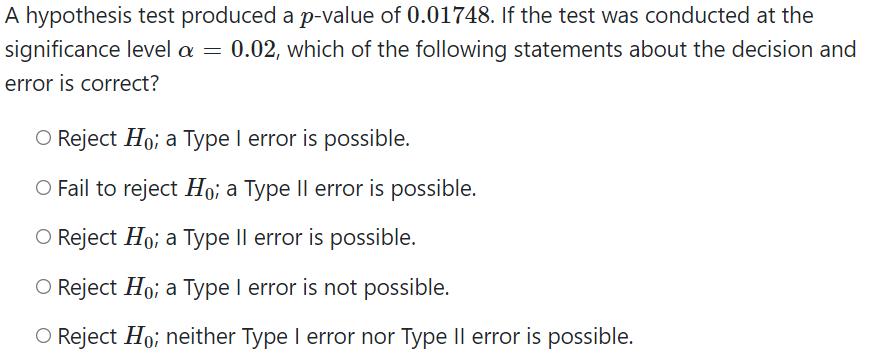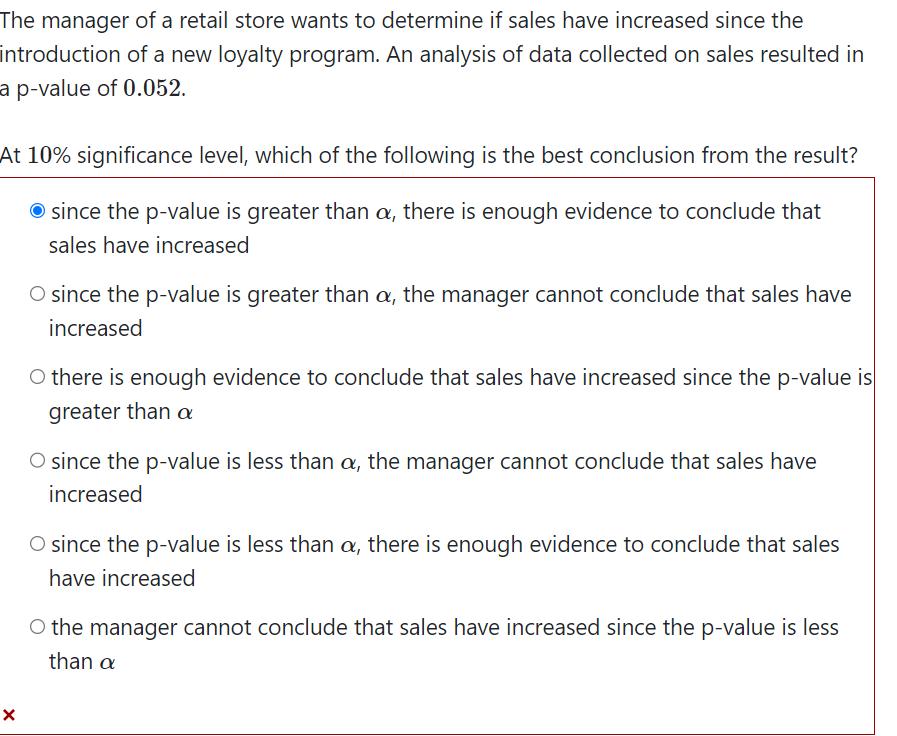Answered step by step
Verified Expert Solution
Question
1 Approved Answer
A hypothesis test produced a p-value of 0.01748. If the test was conducted at the significance level a = 0.02, which of the following



A hypothesis test produced a p-value of 0.01748. If the test was conducted at the significance level a = 0.02, which of the following statements about the decision and error is correct? O Reject Ho; a Type I error is possible. O Fail to reject Ho; a Type II error is possible. O Reject Ho; a Type II error is possible. O Reject Ho; a Type I error is not possible. O Reject Ho; neither Type I error nor Type II error is possible. The manager of a retail store wants to determine if sales have increased since the introduction of a new loyalty program. An analysis of data collected on sales resulted in a p-value of 0.052. At 10% significance level, which of the following is the best conclusion from the result? O since the p-value is greater than a, there is enough evidence to conclude that sales have increased O since the p-value is greater than a, the manager cannot conclude that sales have increased O there is enough evidence to conclude that sales have increased since the p-value is greater than a O since the p-value is less than a, the manager cannot conclude that sales have increased O since the p-value is less than a, there is enough evidence to conclude that sales have increased O the manager cannot conclude that sales have increased since the p-value is less than a x A meteorologist is conducting a study to determine if the mean annual temperature has changed. Which of the following best represents a Type II error? O Concluding that the mean annual temperature has changed when the null hypothesis is true. O Concluding that the mean annual temperature has changed when the alternative hypothesis is true. O Concluding that the mean annual temperature has changed when the alternative hypothesis is false. O Concluding that the mean annual temperature has not changed when the null hypothesis is true. O Concluding that the mean annual temperature has changed when in fact it has not changed. O Concluding that the mean annual temperature has not changed when in fact it has changed. O Concluding that the mean annual temperature has changed when the null hypothesis is false.
Step by Step Solution
There are 3 Steps involved in it
Step: 1

Get Instant Access to Expert-Tailored Solutions
See step-by-step solutions with expert insights and AI powered tools for academic success
Step: 2

Step: 3

Ace Your Homework with AI
Get the answers you need in no time with our AI-driven, step-by-step assistance
Get Started


